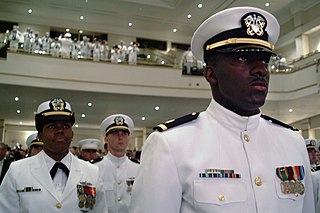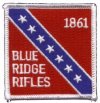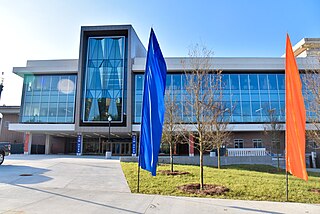
The University of Florida is a public land-grant research university in Gainesville, Florida. It is a senior member of the State University System of Florida, traces its origins to 1853, and has operated continuously on its Gainesville campus since September 1906.

The Reserve Officer Training Corps is a group of college- and university-based officer-training programs for training commissioned officers of the United States Armed Forces.

The Texas A&M University Corps of Cadets is a student military organization at Texas A&M University. Established with the university in 1876, it is the oldest student organization on campus.

General James Alward Van Fleet was a United States Army officer who saw service during World War I, World War II and the Korean War. Van Fleet was a native of New Jersey, who was raised in Florida and graduated from the United States Military Academy. He served as a regimental, divisional and corps commander during World War II and as the commanding general of United States Army and other United Nations forces during the Korean War.

A drill team can be one of four different entities:
- A military drill team is a marching unit that performs routines based on military foot or exhibition drills. Military drill teams perform either armed or unarmed.
- A dance drill team creates routines based on precision dance movements rather than military drill. These teams usually do not carry anything, but may use props in field production numbers. They may perform to recorded music, or the live music of an accompanying marching band.
- A team that execute routines carrying either one or multiple flags or pom-poms. This team's movements are also based in dance and may also have a heavy influence of gymnastics as well. These teams also may perform to music, either live or recorded.
- A team that is mounted or advances some type of mobile object. May also include teams of dogs and handlers.

Exhibition drill is a variant of drill that involves complex marching sequences which usually deviate from drill used in the course of ordinary parades. Teams performing exhibition drill are often affiliated with military units, but the scope of exhibition drill is not limited to military drill teams. Exhibition drill is often performed by Armed Forces Precision Drill Teams, the drill teams at service academies and ROTC and JROTC units, and civilian drill teams that perform at parades, drill meets, and half-time shows and other public venues.

The Blue Ridge Rifles, established in 1950, is a military precision drill team within the ROTC program at the University of North Georgia. It is not directly affiliated with the Blue Ridge Rifles that existed as a military unit of the Confederate States Army during the Civil War, but drew its name in memory of that unit that stood up from the local area.

Kathryn Chicone Ustler Hall is a historic building on the campus of the University of Florida (UF) in Gainesville, Florida. It was designed by William Augustus Edwards in the Collegiate Gothic style and opened in 1919 as the University Gymnasium. In that capacity, the building was the first home of the Florida Gators men's basketball team, and it continued to serve as the home court for most of the university's indoor sports programs until the Florida Gymnasium opened in the late 1940s. The university became co-educational at about the same time, and the building was rechristened the Women's Gymnasium and was repurposed as a recreation center for the school's many new female students. On June 27, 1979, it was added to the U.S. National Register of Historic Places.

The Florida Gymnasium is a historic building located on the campus of the University of Florida (UF) in Gainesville. It opened in 1949 as a 7,000-seat multi-purpose arena and served as the home court of the Florida Gators men's basketball team and other UF indoor sports programs for over thirty years, acquiring the nickname of "Alligator Alley" during that time.

The University of Florida Fightin' Gator Marching Band, also known as The Pride of the Sunshine, is the official marching band for the University of Florida. The current era of the band is also referred to as The Sound of the Gator Nation. They perform at every Florida Gators home football game at Ben Hill Griffin Stadium and also at various other events such as pep rallies, parades, and the annual Orange and Blue spring scrimmage game. A full band usually travels to two away games a year while at other games a small/medium-sized pep band will attend. Members of the Gator Band, as well as other University of Florida students, are encouraged to join other ensembles such as concert band, jazz band, basketball band, and volleyball band. The twirlers for the Gator Band are referred to as the Gatorettes and the color guard is called the Florida Visual Ensemble.

The Florida–Florida State football rivalry is an American college football rivalry between the teams of the two oldest public universities of the U.S. state of Florida: the University of Florida (UF) Gators and Florida State University (FSU) Seminoles. Both universities participate in a range of intercollegiate sports, and for the last several years, the Florida Department of Agriculture and Consumer Services has sponsored a "Sunshine Showdown" promotion that tallies the total number of wins for each school in head-to-head sports competition. However, the annual football game between the Gators and Seminoles has consistently been the most intense and notable competition between the in-state rivals.

The 1910 Florida football team represented the University of Florida during the 1910 college football season. The season was George E. Pyle's second as the head coach of the University of Florida football team. Pyle's 1910 Florida football team finished its fifth varsity football season undefeated on its home field, with an overall record of 6–1.

The Florida–Tennessee football rivalry, also called the Third Saturday in September, is an American college football rivalry between the Florida Gators football team of the University of Florida and Tennessee Volunteers football team of the University of Tennessee, who first met on the football field in 1916. The Gators and Vols have competed in the same athletic conference since Florida joined the now-defunct Southern Intercollegiate Athletic Association in 1910, and the schools were founding members of the Southeastern Conference in 1932. Despite this long conference association, a true rivalry did not develop until the early 1990s due to the infrequency of earlier meetings; in the first seventy-six years (1916–91) of the series, the two teams met just twenty-one times. The Southeastern Conference (SEC) expanded to twelve universities and split into two divisions in 1992. Florida and Tennessee were placed in the SEC's East Division and have met on a home-and-home basis every season since. Their rivalry quickly blossomed in intensity and importance in the 1990s and early 2000s as both programs regularly fielded national championship contending teams under coaches Phil Fulmer of Tennessee and Steve Spurrier at Florida.
The 1973 Florida Gators football team represented the University of Florida during the 1973 NCAA Division I football season. The season was Doug Dickey's fourth as the Florida Gators football team's head coach. Dickey's 1973 Florida Gators finished with a 7–5 overall record and a 3–4 Southeastern Conference (SEC) record, tying for fifth among ten SEC teams.

Albert Einstein Gator and Alberta Gator are the official mascots of the University of Florida in Gainesville, Florida. Costumed in plush, Albert and Alberta are Florida representations of American alligators, which are commonly found throughout the state of Florida. He was named after Albert Einstein.

The J. Wayne Reitz Union is the student union of the University of Florida, located on Museum Road on the university campus in Gainesville, Florida, United States. The union was named in honor of J. Wayne Reitz, the fifth president of the university, who served from 1955 to 1967. The building, which was originally completed in 1967, contains dining facilities, meeting rooms, offices, a computer lab, a game room, an outdoor amphitheater, retail stores, a movie theater and a hotel.

The University Athletic Association, Inc. (UAA) is a non-profit corporation that is responsible for maintaining the Florida Gators intercollegiate sports program of the University of Florida in Gainesville, Florida. The UAA is run by a board of directors led by the University of Florida's athletic director. The athletic director also acts as the UAA's chief financial officer and reports directly to the president of the university.

University of Florida ROTC is the official officer training and commissioning program at the University of Florida in Gainesville, Florida. The ROTC Program offers commissions for the U.S. Army, U.S. Navy, U.S. Marines, and the U.S. Air Force. The unit is one of the oldest in the nation, and is currently located in Van Fleet Hall on the university's campus. The university's Air Force ROTC won the Right of Line Trophy in 2007 and 2009 ranking it as the top program of its size in the nation. The unit has also been home to the prestigious Gator Guard Drill Team since 1953.
The 1906 Florida football team was the first intercollegeate football squad fielded by the University of Florida, which was established in 1905 and opened its new Gainesville campus for the 1906–1907 academic year. Florida was a member of the Intercollegiate Athletic Association of the United States (IAAUS) but was not yet affiliated with an athletic conference. The university had not yet constructed on-campus sports facilities, so until 1911, its football and baseball teams played and practiced at a municipal park near downtown Gainesville known simply as The Ballpark.

The Samuel Proctor Oral History Program (SPOHP) is the official oral history program at the University of Florida. With over 6,500 interviews and more than 150,000 pages of transcribed material, it is one of the premier oral history programs in the United States. SPOHP's mission is "to gather, preserve, and promote living histories of individuals from all walks of life." The program involves staff, undergraduate and graduate students, and community volunteers in its operation.



















